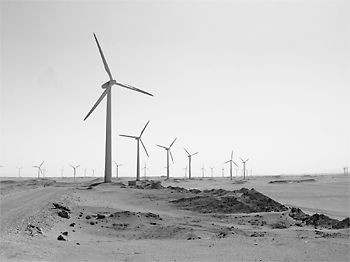Japan's Official Development Assistance White Paper 2007
Box 1. Using ODA to Promote the Clean Development Mechanism (CDM)
Basic Framework and Significance
1. CDM is one of the Kyoto Mechanisms based on the Kyoto Protocol that is internationally agreed under the United Nations Framework Convention on Climate Change (UNFCCC).*1 CDM is a mechanism which developed countries and developing countries implement joint projects to reduce and absorb greenhouse gases. When the projects result in reduction, developed countries acquire carbon credits which can be posted as their own emission reductions to help meet their own emissions targets. This mechanism is considered to be one of the effective ways of addressing global warming while helping developing countries achieve sustainable development.
2. For countries like Japan, with many advanced energy-saving technologies, it is difficult to achieve the reduction targets by domestic measures alone. In that case, using CDM to obtain the credits is essential for meeting the Kyoto Protocol commitments.
3. On the other hand, efforts by developing countries to push on with emission reduction projects on their own are hampered by financial and technical limitations. Using ODA, therefore, to promote the Kyoto Mechanisms helps developing countries control their greenhouse gas emissions without being limited by their own constraints. Japan believes that it is important to contribute to both development assistance and global warming prevention by utilizing ODA to promote CDM projects. Based on that belief, and from the perspective of making full use of the Kyoto Mechanisms, Japan had been advocating the application of ODA to CDM in the climate change negotiations.*2 Finally, the Marrakesh Accord was agreed in 2001 under the condition that "public funding for clean development mechanism projects from Parties in Annex I is not to result in the diversion of official development assistance," which allowed ODA to be applied for CDM projects.
4. Japan believes that ODA can be used for CDM projects if both donor and recipient countries confirm that it does not lead to the diversion of ODA. Based on that stance, Japan applied for registering the Zafarana Wind Power Plant Project as a CDM project, which was approved in June 2007 as Japan's first ODA project eligible for CDM (to be referred to later). Japan intends to continue the promotion of CDM projects in that way.
5. Steps involving CDM are as follows:
(1) Advanced nations (investors) promote projects in developing countries to reduce and absorb greenhouse gases through financial and technical cooperation;
(2) The projects result in emission reduction compared to before their implementation;
(3) Advanced nations and developing countries mutually approve the projects as CDM projects;
(4) After the approval, application for registration to the third-party institution (United Nations CDM Executive Board). When the registration is complete, advanced nations can use part or all of the emission reductions resulting from the projects as Certified Emission Reduction (CER) to meet their reduction targets.
Registration of Zafarana Wind Power Plant Project in Egypt as a CDM Project
Egypt has been promoting the use of alternative and renewable energies to make its dependency on fossil fuels lower. To help that effort, Japan assisted in the construction of a wind power plant (with a capacity of 120MW) in the Zafarana Region on the coast of Red Sea, 200 kilometers southeast of Cairo, the capital. The project will contribute to reduce greenhouse gases by replacing the thermal power with renewable wind energy*3 (in FY2003, Japan disbursed ¥13,497 million through loan aid).
Furthermore, in June 2007, the application for CDM registration of the Zafarana Wind Power Plant Project was approved by the United Nations CDM Executive Board. Thus the project was registered as Japan's first ODA project qualified as CDM. Following the registration, Japan Carbon Finance, Ltd. (JCF) will acquire part of the resulting reduction as carbon credits. As such, the project is also expected to help Japan achieve its reduction target under the Kyoto Protocol.

(Photo: JBIC)

 Next Page
Next Page